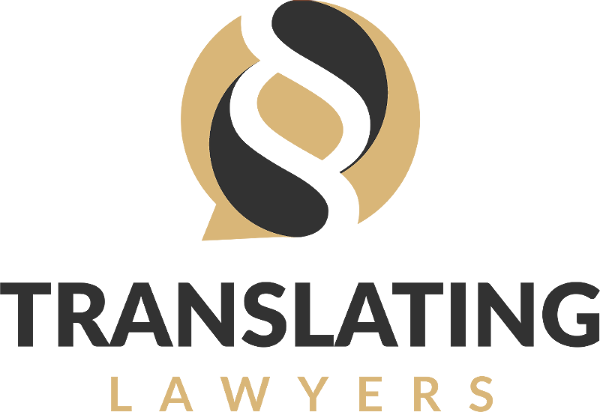Legal Translation and Plain Language Part 2: Demystifying Plain Language

I. A Little Recap
Contrary to popular belief, literality is never the right choice in legal translation. While fidelity to source is indeed the guiding principle when translating all things law, fidelity is better achieved by other means, and none of those means involve word-for-word or literal translation.
In my last post, I argued that if language professionals applied the same method of interpretation to the translation at hand as the courts do to the texts brought to them in legal disputes, translation quality would significantly improve without sacrificing fidelity or resorting to literality. I further argued that the best method for interpreting legal texts is textualism, as textualism aims to extract the plain language meaning of the text to further its comprehension.
Applied methodologically to translation, textualism can result in high levels of fidelity to source and, more importantly, help translators construct objective criteria for justifying their linguistic decisions—regardless of whether or not plain language is later used in the target text.
In other words, although translators (as secondary drafters) cannot impose plain language on the target text, what they can do, instead, is adopt a methodological approach to interpretation that emulates how judges approach legal texts. Why? Because it will help them to unravel the meaning that needs to be captured from the source text and ensure that the right message is being conveyed. And, last time I checked, translation was all about conveying the right message, not just the right words.
II. Main Misconceptions and Objections
Based on the mere fact that I used the words plain language and translation in the same title, my post sparked some objections, none of which went to the core of the idea I was putting forward. But because they were inline with those typically formulated against plain language in general, I figured I’d address them in this post.
a. Dumbing it down
A very common misconception about plain language is that it involves dumbing down the message, as if complex ideas could only be expressed in convoluted terms. The more complex the idea, apparently, the more complicated we have to make it sound. But dumbing down a message and conveying it clearly are two different things. And plain language is about the latter, not the former.
Let’s take the following example:
| Original Version | Plain Language Version | |
| In large part, it was our anticipation of this type of claim which cautioned us for so long against abrogation of the immunity rule. | Our anticipation of such claims long cautioned us against abrogating the immunity rule. |
Not only was the original message not dumbed down, but it actually flows more naturally and is easier to follow in the plain language version.
b. Uglying it up
Another common objection is that some languages are simply too beautiful and too much of that beauty would be lost in plain language. This is a very common objection with languages like French, which are known for their music and linguistic sophistication. But again, that objection parts from a misconception about what plain language is, which becomes very evident when we look at some of the guiding principles of legal drafting in plain language, such as:
- Avoid using multiple conditionals in a single sentence (or one sentence >> one condition)
- Avoid using the same word for multiple meanings (or one word >> one meaning)
- Avoid double negatives or exceptions to exceptions (is this not just common sense?)
While all of these principles go a long way to clearly conveying the message, none of them in any way involve sacrificing naturalness, flow or whatever people mean when they speak of the “beauty” of a language—unless by “beauty” what they mean is lack of structure, order or common sense.
c. Unpopular = Bad
In the days after publishing my prior post on plain language I was bombarded via social media with examples of legal texts that don’t use plain language. The argument there, apparently, is that because plain language is not wildly popular, then it must be a bad idea. By that rationale, what makes an idea good is solely its popularity.
Weakest objection ever. Just because something is not wildly popular now doesn’t mean it’s not a good idea. There was a time when people thought electricity was a thing of the Devil and look how that turned out. Conversely, there was a time when slavery was wildly popular too, and no person in their right mind today would argue that slavery is anything less than one of the most shameful and horrible collective mistakes of human history. We need a little more than popularity to decide against or in favor of plain language.
d. Confusing primary and secondary drafting
A common objection (and one that actually holds some merit) is that translators are not primary drafters. They are secondary drafters; and, as such, it’s not up to them to decide whether plain language is to be used in the target text.
Granted. Secondary drafters don’t have the final say.
In legal translation, if the source text used terms of art instead of plain language words, then terms of art should be reflected in the target text, unless the client/primary drafter agrees otherwise.
However, plain language is about more than just terms of art. It’s about how we structure our sentences and order our thoughts. And as secondary drafters, translators can restructure sentences for clarity in the target language.
Let’s look at the following example:
| Original Source | Plain Language Interpretation* | Translation | ||
| “Affiliate” means, with respect to any Person, any other Person (a) a majority of the ownership interests of which are owned by such first Person, or (b) who or that, directly or indirectly through one or more intermediaries, controls, is controlled by, or is under common control with, such first Person. | “Affiliate” means any Person (a) with respect to which any other Person has a majority of the ownership, or (b) controls, is controlled by, or is under common control with any other person, directly or indirectly, through one or more intermediaries. | “Filial” se refiere a toda Persona (a) respecto de la cual otra Persona posea una participación mayoritaria, o (b) que, de manera directa o indirecta, a través de uno o más intermediarios, controle a otra Persona, sea controlada por ella o esté bajo control conjunto con esa Persona. |
* Meaning how we understand the source text regardless of its unfortunate phrasing (for more on this, see my previous post).
III. The Takeaway
Objections to plain language in legal translation part from a misconception of what plain language actually is. If by plain language we mean “[w]riting that is clear, concise, well-organized, and follows other best practices appropriate to the subject or field and intended audience” (as defined in the Plain Writing Act of 2010, for example), then none of the usual objections to plain language subsist.
The only caveat to translators is that, even when resorting to a plain language interpretation of the source text to more accurately capture meaning, plain language should not be imposed on the target text without talking it over with the primary drafter or client.
—
If you liked this post, and want to read more from Translating Lawyers, sign up for our newsletter. If you’re already a newsletter subscriber, check your inbox on December 25th. There’ll be a special gift just for you!


One Response
Greetings! Very helpful advice within this post! It is the little changes which will
make the greatest changes. Thanks for sharing!
Comments are closed.